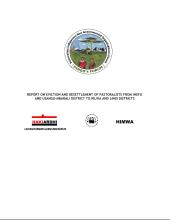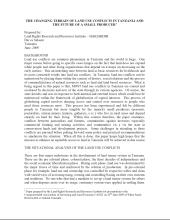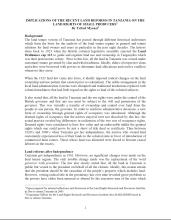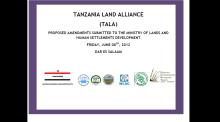/ library resources
Showing items 1 through 9 of 11.Abstract With an estimated 50% of global land held, used, or otherwise managed by communities, interfacing indigenous, customary, and informal land tenure systems with official land administration systems is critical to achieving universal land tenure security at a global scale.
A vast array of trends and innovations, such as drones and person-to-person trust solutions, have been proposed to revolutionize the task of recording land and property rights.
Ethiopia has implemented one of the largest, fastest and least expensive land registration and certification reforms in Africa.
Societal drivers including poverty eradication, gender equality, indigenous recognition, adequate housing, sustainable agriculture, food security, climate change response, and good governance, influence contemporary land administration design.
Since around 2011 pilot projects to innovate land tenure documentation are being implemented in various countries in the global south in order to address the shortcomings of formal land registration.
This study is focused on the effects of the eviction process of pastoralists from Mbarali to Lindi Rural and Kilwa Districts in Lindi Region. The study sampled six villages out 15 villages in Lindi Rural and Kilwa districts.
Land use conflicts are common phenomena in Tanzania and the world at large. One major reason before going to specific cases hinges on the fact that land does not expand while people and other living organizations that depend on it keeps on increasing on the early surface.
The land tenure system of Tanzania has passed through different historical milestones which form the basis for the analysis of the land tenure regime in general and tenure relations for land owners and users in particular in the past eight decades.
A comprehensive legal analysis highlighting gaps and recommendations in the four selected land related legislations in Tanzania.
Pagination
Land Library Search
Through our robust search engine, you can search for any item of the over 73,000 highly curated resources in the Land Library.
If you would like to find an overview of what is possible, feel free to peruse the Search Guide.





